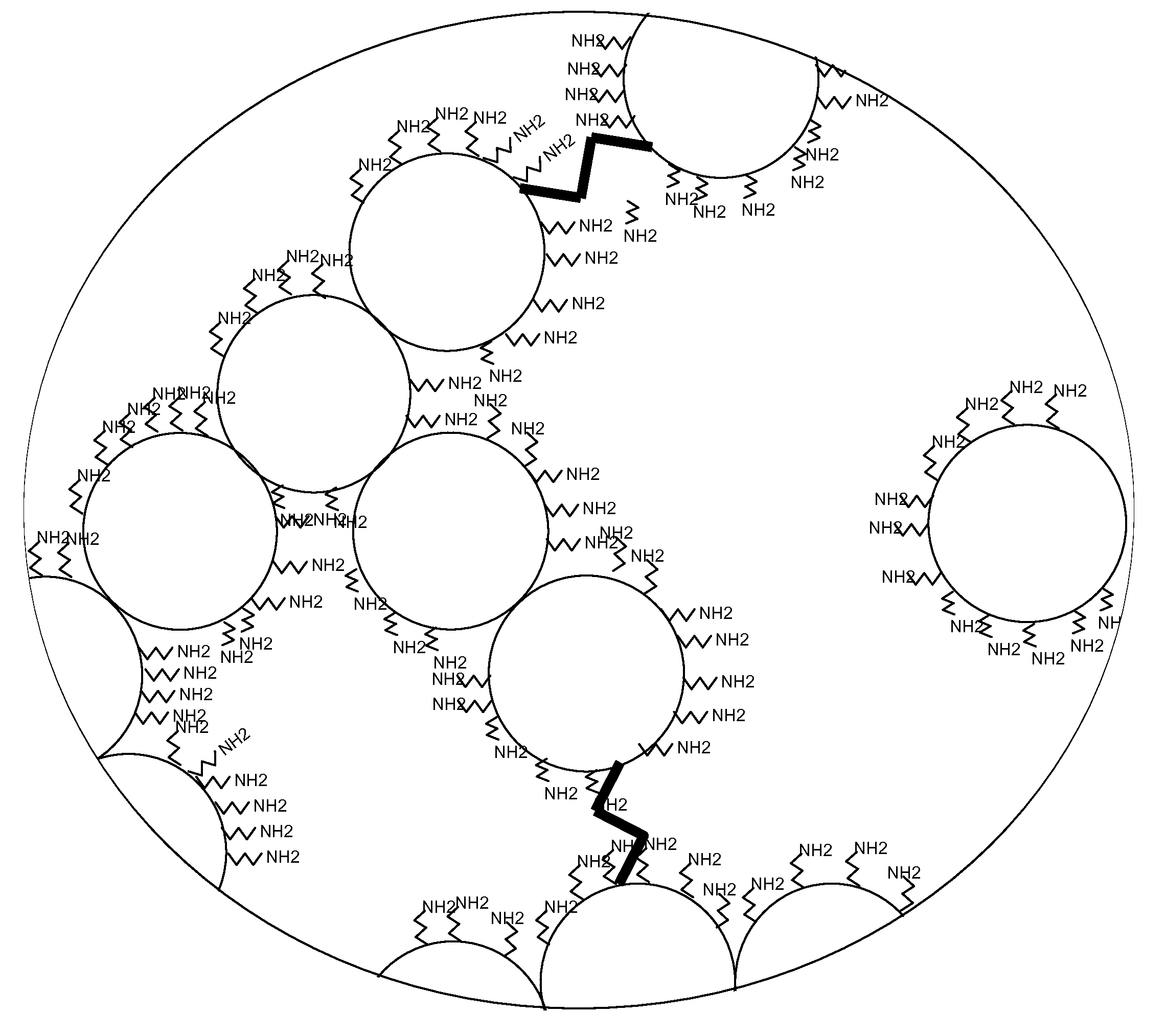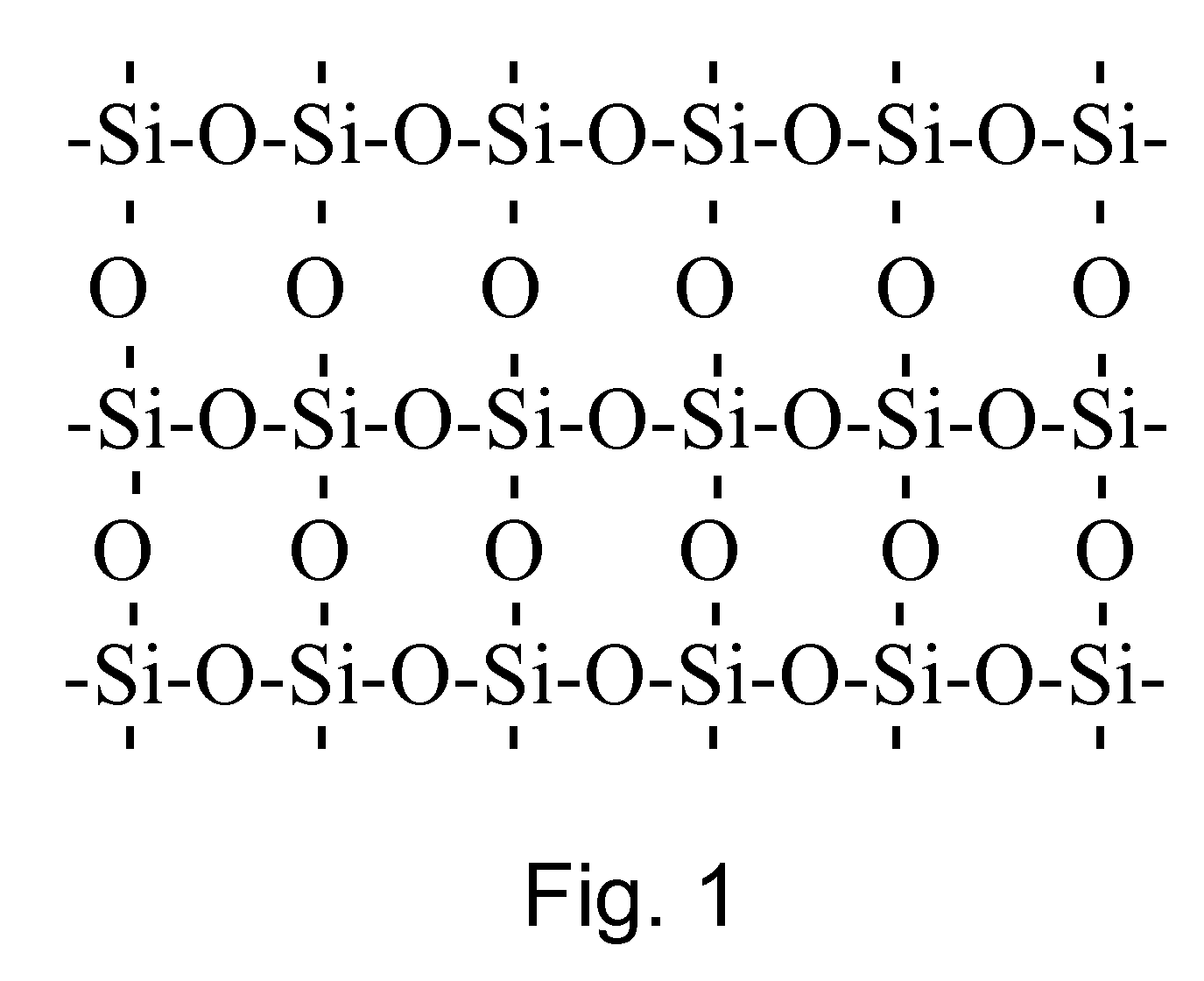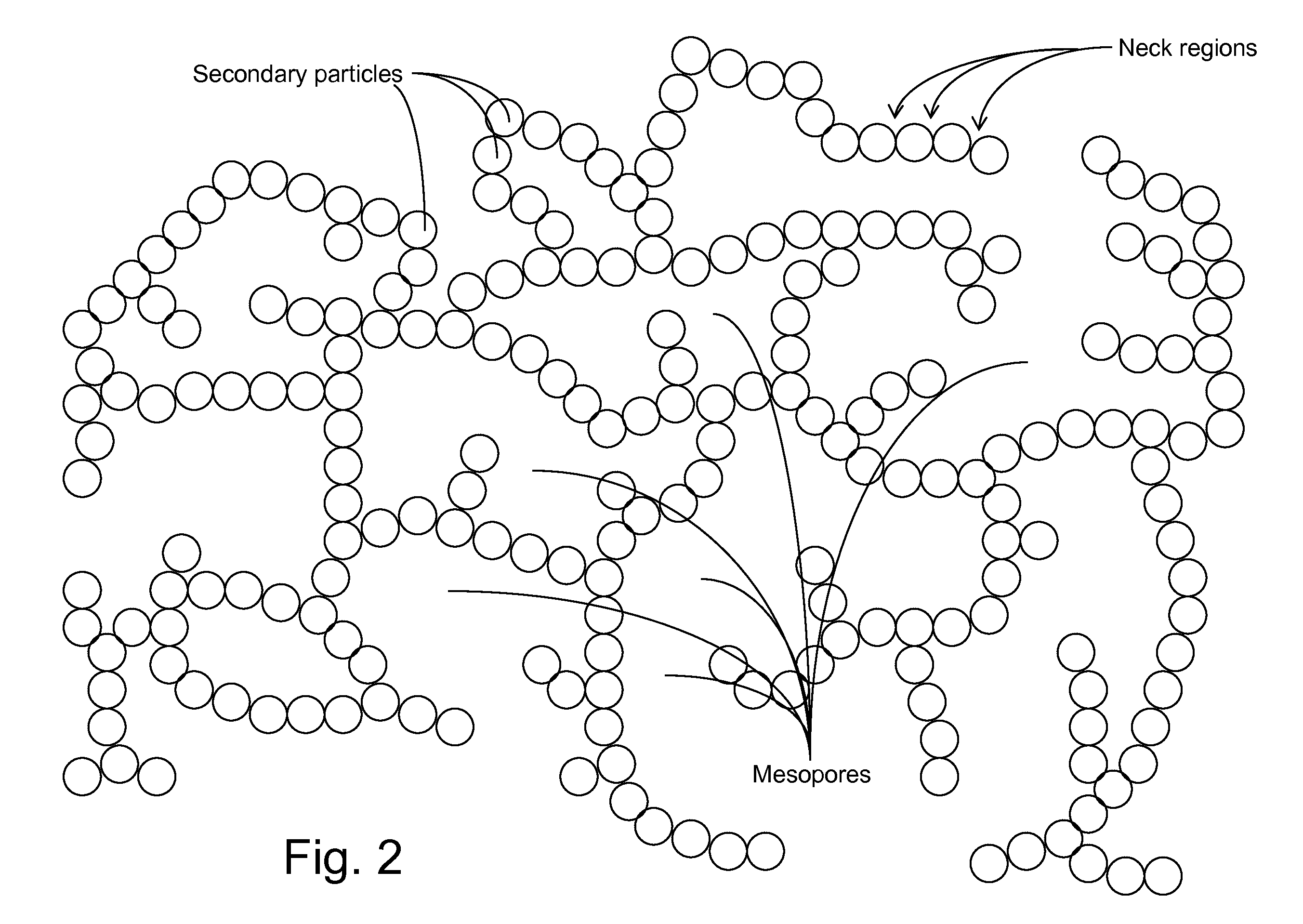Highly Porous Ceramic Oxide Aerogels Having Improved Flexibility
a technology of ceramic oxide and aerogels, which is applied in the direction of silicon oxides, organic chemistry, silicon compounds, etc., can solve the problems of relative inflexibility and brittle failur
- Summary
- Abstract
- Description
- Claims
- Application Information
AI Technical Summary
Benefits of technology
Problems solved by technology
Method used
Image
Examples
example 1
Polystyrene Cross-Linked Aerogels with 1,6-Bis(trimethoxysilyl)hexane Flex-Link
[0164]An experiment was performed to incorporate flexible linkages into a functionalized aerogel, wherein vinyl functionality was also incorporated at the secondary particle surfaces and used as an anchor to support polystyrene cross-linking of the aerogel. Thus, the resulting aerogel incorporated both flexible linkages and a polymer cross-linked conformal coating as described herein. Numerous samples were prepared to demonstrate the effect of varying the reactant concentrations on the resulting aerogel properties. To prepare the gels, first the following components were combined in a reaction mixture using ethanol as the solvent to carry out the network-synthesis reaction via hydrolysis and condensation:[0165]tetramethoxysilane (TMOS), which is an unfunctionalized silica gel precursor species wherein all Si-bonds are hydrolysable;[0166]1,6-bis(trimethoxysilyl)hexane (BTMSH) as the flexible linkage precur...
example 2
Air Dried Aerogels that Exhibit No or Negligible Shrinkage or Fracture
[0177]Typically, conventional aerogels require supercritical fluid extraction of the solvent in order to maintain the gel's porous network in the final product. Ambiently dried gels (“xerogels”) typically collapse and shrink, giving a much more dense material. However, it has been observed that by adding 30-50 mol % of a flex-link additive, gels can be air-dried at ambient pressure without observable shrinkage or fracture. Specifically, two monoliths were prepared similarly as in Example 1 above, wherein the total silane included 32.83 mol % BTMSH as the flex-link precursor, 36.3 mol % VTMS as the functionalized silica precursor and balance TMOS as the unfunctionalized silica precursor, in 1.37 mol / L total silane. One of the monoliths was dried using the conventional supercritical CO2-mediated drying procedure, wherein the reaction solvent is exchanged with liquid CO2, which is then converted directly into the sup...
example 3
Di-isocyanate Cross-Linked Aerogels with 1,6-Bis(trimethoxysilyl)hexane as Flexible Link
[0178]Use of a flex-link in the underlying silica gel backbone is also demonstrated using a combination of TMOS, BTMSH and APTES with a di-isocyanate monomer (Desmodur N3200) used to produce polymeric cross-linking from amine groups at the secondary-particle surfaces. The structures of the three silane species are reproduced below for convenience.
[0179]The total moles of silane (the sum of the above three components) were varied from 0.25 M to 0.75 M as shown in Table 2. The amount of APTES was held constant at 17.5 mol % while BTMSH was varied from 10 to 50 mol % of the total silane. The balance total silane in each sample was thus TMOS. The amount of di-isocyanate was varied from 10 to 30 w / w % of solution. The water:silane mole ratio was held constant at 7 for each reaction.
TABLE 2Preparation conditions and some measured propertiesof the di-isocyanate cross-linked aerogel monolithsBTMSH, mol %...
PUM
| Property | Measurement | Unit |
|---|---|---|
| Fraction | aaaaa | aaaaa |
| Fraction | aaaaa | aaaaa |
| Fraction | aaaaa | aaaaa |
Abstract
Description
Claims
Application Information
 Login to View More
Login to View More - R&D
- Intellectual Property
- Life Sciences
- Materials
- Tech Scout
- Unparalleled Data Quality
- Higher Quality Content
- 60% Fewer Hallucinations
Browse by: Latest US Patents, China's latest patents, Technical Efficacy Thesaurus, Application Domain, Technology Topic, Popular Technical Reports.
© 2025 PatSnap. All rights reserved.Legal|Privacy policy|Modern Slavery Act Transparency Statement|Sitemap|About US| Contact US: help@patsnap.com



